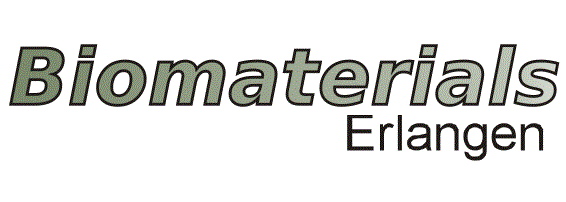Sindhoori Ramesh
Sindhoori Ramesh
Masterstudentin
Investigation of alginate based hydrogel-PEDOT system for 3D-printing
Supervisors: Lisa Schöbel, Prof. Aldo R. Boccaccini
For optimal tissue regeneration especially for applications in bone, cartilage, or neural tissue, controlling the growth and differentiation of cells is of high significance [1]. It has already been shown in previous studies, that this can be achieved by using electrically conductive materials such as Poly(3,4-ethylenedioxythiophene) (PEDOT), which is known for its high conductivity, hydrophilicity, and biocompatibility [1,2]. Biofabrication is a relevant tool in the field of tissue engineering with which scaffolds made from hydrogels can be fabricated with high degree of complexity [3]. Using these two materials in combination with PEDOT, an electrically conductive scaffold may be fabricated using 3D-printing. The aim of this master thesis is the characterization of alginate based hydrogels incorporating PEDOT in terms of degradation behavior, mechanical and electrical properties as well as 3D printability and cell-material interactions.
[1] T. Distler and A. R. Boccaccini, “3D printing of electrically conductive hydrogels for tissue engineering and biosensors – A review,” Acta Biomaterialia, vol. 101. Acta Materialia Inc, pp. 1–13, Jan. 01, 2020. doi: 10.1016/j.actbio.2019.08.044.
[2] J. H. Min, M. Patel, and W. G. Koh, “Incorporation of conductive materials into hydrogels for tissue engineering applications,” Polymers, vol. 10, no. 10. MDPI AG, Sep. 28, 2018. doi: 10.3390/polym10101078.
[3] S. Reakasame and A. R. Boccaccini, “Oxidized Alginate-Based Hydrogels for Tissue Engineering Applications: A Review,” Biomacromolecules, vol. 19, no. 1. American Chemical Society, pp. 3–21, Jan. 08, 2018. doi: 10.1021/acs.biomac.7b01331.

